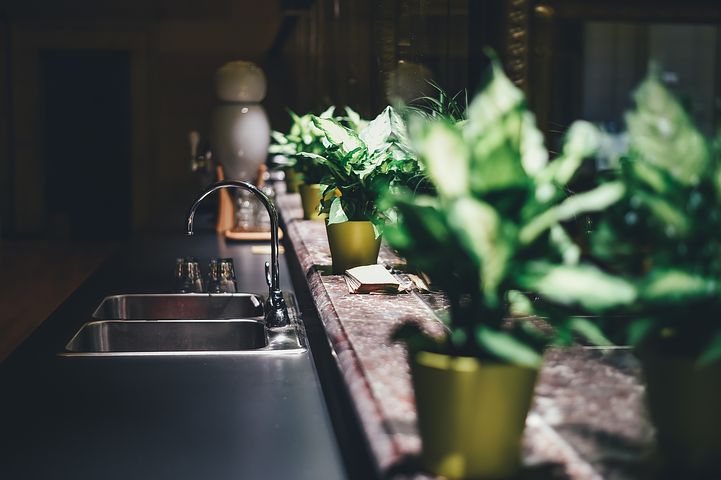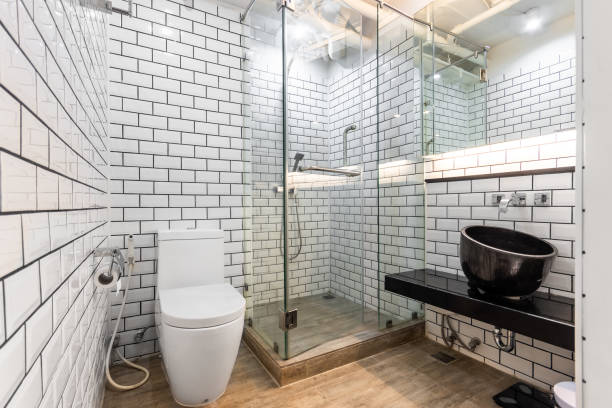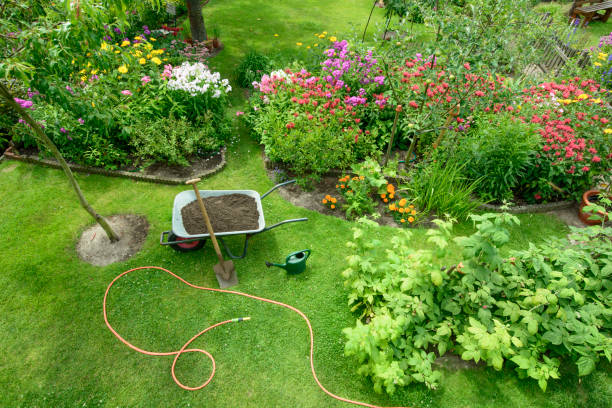Simple Handy Tips To Reduce Water Consumption in Your Home and Garden
Water conservation is still the best way to reduce how much water we use and keep our water supply safe. Water availability is a significant factor in droughts, population growth, and climate change in the area. The need to save water is very important because we all play a part in how much water we use. With these simple changes to our daily routines, we can cut down on our water footprint and protect this vital resource for the next generation.
Table of Contents
Save Indoors
Kitchen

- Reduce the use of garbage disposal units in kitchen sinks. A compost pile is a great alternative.
- When cleaning vegetables, avoid letting the water from the faucet run. Wash the veggies in a bowl or sink of clean water instead of scrubbing them.
- Look for Leaks in the Pipes and Faucets. Every time a faucet washer drips, 20 gallons of water are wasted each day. In the case of a large leak, it’s hundreds of gallons of water. Some faucet leaks are easy to spot, while others require a little more investigation. Allow the sinks and tubs to dry thoroughly for an hour before using them again. You’ve discovered a leak if you see any dampness. Before turning on the water, thoroughly dry, the area around the faucet handles to check for leaks. If there is a leak, water will collect next to them.
- Do not run the water while rinsing dishes by hand. Rinse water should be placed in one of your sinks if there are two of them. After washing your dishes, please put them in a dish rack to dry, and then rinse them quickly with a sprayer or pan of water.
- Rather than running frozen foods under hot water from the faucet, allow them to defrost in the refrigerator.
- Eat fewer foods that require a lot of water. Half of our water consumption comes from our diets. There is a difference between the water footprints of different foods. Begin by cutting back on beef, one of the most water-intensive foods. Going plant-based instead of animal-based can significantly reduce your water footprint.
- Reduce Your Spending. Despite being an often-overlooked source of water use, consumer goods account for up to one-third of the average person’s water footprint. From clothing to electronics to household goods, buying less of everything can significantly impact water consumption.
Bathroom & Toilets

- Turn off the water except time to rinse. When you lather up, brush your teeth, shave or wash the dishes, don’t let the faucets run. Instead of continuously letting the water run, fill the deep container with water. This simple step can save up to 3,000 gallons of water per year.
- Check for toilet leaks. It’s as simple as removing the tank’s lid and adding some food coloring or a dye tablet to the water. The toilet should not be flushed. If the coloring appears, replace the flapper or rubber washer. Leaks waste more than 100 gallons of water per day.
- Reduce your shower time by a minute. Water heating costs can be reduced as well. 550 gallons of water are saved every year by reducing your shower time by one minute.
- Install low-flow faucet aerators, water-saving showerheads, and shower timers. It can reduce your shower’s flow to three gallons per minute instead of five to ten.
- Reduce the number of baths and water usage.
- Until the water in your shower or bath has warmed up, save it in a bucket. Then you can use it to flush the toilet or water your plants.
- Make your toilet dual-flush by purchasing a cheap kit.
- Put plastic bottles or a flotation device in the toilet. Fill two plastic bottles with sand or pebbles to reduce water waste. Then put the bottles in the toilet tank, away from the working mechanisms. Or get a tank bank or float booster. It could save ten gallons or more per day. To ensure proper flushing, leave three gallons of water in the tank. Insufficient water causes users to hold the lever down too long or perform multiple flushes to get rid of waste. Two 1.4 gallon flushes are worse than one 2 gallon flush.
- The most effective way to reduce water waste in your bathroom is to use composting toilets, which require no water at all! What’s more, they keep all of the nutrients and pollutants out of waterways, allowing them to be used in non-food landscapes instead. Before putting in a sprinkler system, make sure it is legal in your area by checking the codes. You can read our article on composting toilets to determine whether or not they are right for you.
- The toilet is not a garbage can or ashtray. So, do not through anything in it. The amount of water wasted by flushing away a cigarette butt or a tissue varies from five to seven gallons.
- Buy a Toilet Flapper. Installing an adjustable toilet flapper allows the user to adjust the flush rate to achieve a single good flush every time.
Additional Tips
- Only used the washing machine and dishwasher when several loads to wash. Your dishwasher uses about 25 gallons of water per cycle, while the washing machine uses 30 to 35 gallons per cycle.
- Do what you can to reuse your water as much as you can. Water your plants or flush the toilet with all of the water you run before it’s hot enough to shower (known as a bucket flush). It is possible to save the water used to clean dishes and food preparation and use it to soak other dishes that need it.
- With pre-slit foam pipe insulation, it’s simple and inexpensive to insulate your water pipes. As a result, you’ll get hot water faster and avoid wasting water as it heats up.
Save Outdoors

Gardens
- Upkeep Your Irrigation System. Test it at the start and end of each season. Clear any visible clogs. Adjust the settings to your plant’s needs and the season. Cooler weather necessitates less watering, while hotter weather necessitates more. Ensure the timer waters in the morning to avoid evaporation and moisture buildup on plants.
- During the early hours of the day, drink plenty of water. Watering should be avoided when it is windy. Early morning is generally preferable to dusk because it helps prevent fungus growth. Water loss due to evaporation is also reduced by early and late watering. Watering early morning is also the best way to keep slugs and other garden pests at bay. Watering should be avoided when it is windy, as the wind can blow sprinklers off target and accelerate evaporation. Water only when necessary and at the most efficient time of day with an automated irrigation system with a moisture sensor. If you use a timer, add a rain or moisture sensor to avoid overwatering.
- Increase the amount of organic matter in your garden beds. It will aid in the absorption and retention of water. ‘top dress’ areas have already been planted with compost or organic matter every year. When preparing the soil for planting, add a healthy dose of compost to new garden beds.
- Use a Soil Moisture Meter to determine how much water is in the soil. Then you can keep your garden from getting too much or too little water with a soil moisture meter that’s easy to set up and use.
- Plants should be grouped according to their watering requirements.
- Don’t overfertilize lawns, as this causes them to require more water to thrive.
Lawns and Shrubs
- If you have a lawn, you should only water your lawn when needed. There is no room for cool spells or rainfall when watering regularly, which reduces the need for watering. Take a stomp on the grass. You can tell if it needs water if it bounces back when you move your foot on top of it. Soak your grass. Water it deeply enough to reach the roots. A light sprinkling on the surface evaporates and is wasted.
- Use drought-resistant grass, like “Eco-Lawn,” for both. Many plants and shrubs that look great don’t need as much water as other plants. Replace herbaceous perennial borders with plants from your area.
- Put mulch around trees and plants. Mulch keeps the water from evaporating and stops weeds from growing. Add organic material like compost or bark mulch to the soil to make it more able to hold on to water. It will help keep water from running off if you push down the mulch around each plant’s drip line.
- Provide shades by planting trees. Aside from cooling your home and storing carbon, adding shade trees can reduce the need for watering. Shade trees help conserve water by shielding plants and soil from the afternoon sun.
Make Use of Efficient Watering Systems
By strategically placing soaker hoses, installing a rain barrel water catchment system, or installing a simple drip-irrigation system, you can significantly reduce the amount of water used for shrubs, beds, and lawns. Consider deep watering with slow-delivery irrigation for trees and woody shrubs, such as a tree-ring soaker hose. Avoid over-watering plants and shrubs, which can degrade plant health and cause leaf yellowing. For targeted watering, use a variable spray nozzle when hand watering.
Rainwater Harvesting System
It is possible to reduce irrigation with drinking water by collecting and storing rainwater. The use of impervious pavement, rain gardens, swales, and dry creek beds will assist in reducing peak runoff during rain events. It allows the soil to absorb rainfall and provides soil microbes with an opportunity to filter some pollutants. These features can also give your landscape a distinctive and creative appearance.
Reuse Wastewater
Greywater (as opposed to “black water” from toilets, which needs to be treated) is the water that drains from your sinks, bathtubs, and washing machines, and it can be used to water plants.
A greywater system, which redirects drain water to your garden, can be as simple as a bucket in your kitchen or shower or as complex as an entire greywater system. It’s not yet legal everywhere, but codes are changing so that more people can benefit from this otherwise wasted water. It’s possible to harvest thousands of gallons of water a year from a washing machine alone. Use plant-based soaps and cleaners in your home if you use greywater in your landscape, so you don’t harm your plants with industrial chemicals.
Xeriscaping
When it comes to landscaping, xeriscaping emphasizes the use of native, drought-resistant plants and their arrangement in an efficient, water-saving manner. Native plants are attractive, attractive to wildlife, and better withstand droughts. They consume less water and will be more resistant to plant diseases indigenous to the area.
Additional Tips:
- Driveways, sidewalks, and steps can all be cleaned with a broom. The use of a hose results in the waste of hundreds of gallons of water every year.
- While washing your car, refrain from using the hose. Make use of a pail of soapy water to wash down your car. Only a hose should be used to rinse it off.
- Don’t let your kids play around with the sprinklers and hoses. On a hot day, children enjoy playing in the sprinkler or hose. Unfortunately, this practice is wasteful of water, but it should be discouraged.
